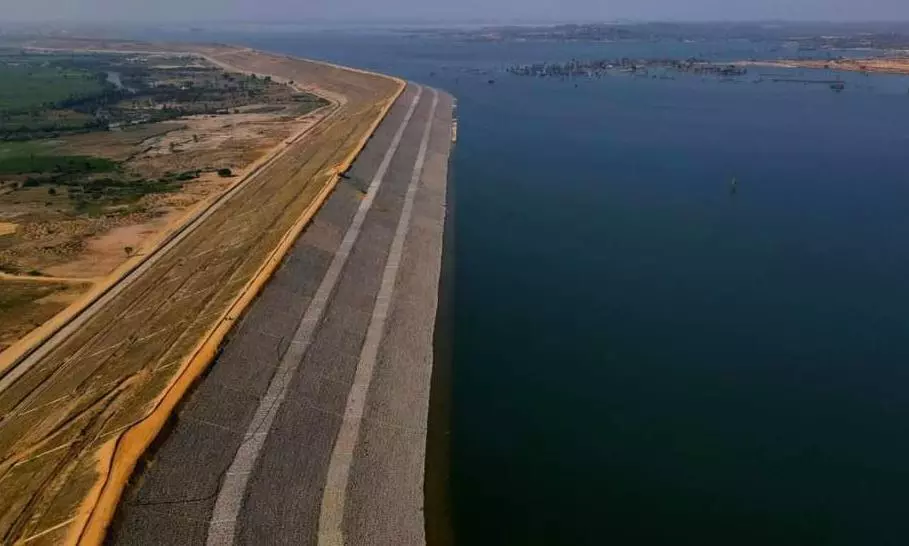Mallannasagar Could be a Ticking Time Bomb

Hyderabad: The Mallannasagar reservoir, built under the Kaleshwaram scheme, is located in an area that could be prone to serious seismic activity, as per the CAG report tabled in the Assembly on Thursday. There was no plan to deal with an emergency, if one occurred.
The 218-page report said the reservoir was built without carrying out detailed seismic surveys of the area, despite an advisory from the city-based National Geophysical Research Institute (NGRI).
The CAG said the irrigation department was specifically told by the Central Designs Organisation — an independent wing of the state irrigation department — which approved the initial preliminary drawings of the reservoir, that a detailed site-specific seismic study was required before final designs could be approved. After the NGRI agreed to do the study, the department chose not to wait for the report and awarded the contract in December 2017, stipulating that the construction must be completed by December 2020.
The NGRI submitted its preliminary report in March 2018, saying that there were reasons for concern about the safety of the reservoir and recommended a more detailed survey. There were at least three features in the location that indicated geological faults, and their relationship with the surface needed to be studied, it said.
The CAG said the absence of detailed studies as recommended by NGRI raised concerns about the “soundness of the reservoir”, and the “safety hazard” it could pose in the event of an earthquake in the region. The CAG said Wapcos (Water and Power Consultancy Services), in its detailed project report of the reservoir, did not discuss seismic studies.
Though the CDSO said it was approving the final drawings with available data “in view of the urgency” it called for further vetting of the drawings by either Water & Power Research Station, Pune, or IIT Roorkee, but there was no evidence that this was done.
The CAG also pulled up the irrigation department, then headed by former chief minister K. Chandrashekar Rao, for not preparing an emergency action plan to deal with a dam-break scenario.
The CAG said until detailed seismic studies are completed, and an EAP is in place, the reservoir should not be filled to capacity.
This might explain the then BRS government’s decision to limit filling the Mallanasagar with 10.6 tmc ft of water as of February 2022, although it was built to hold 50 tmc ft.
What NGRI/CAG said:
There is a deep-seated vertical fault with significant strike-slip motion where Mallannasagar was planned.
Three more linear slip and shear features under the Mallannasagar site need detailed studies.
A 1983 quake of 4.9 had its epicentre just 20 km from where Mallannasagar is and was felt in a radius of 200 km.
Telangana is in seismic zone II, considered safer, but previous 6.3 magnitude quakes in Koyna (1967), Latur (1993) and the 1969 quake in Bhadrachalam (5.7) led to reassessing the ‘shield’ nature of southern India.
A quake of 5 or higher magnitude can cause damage to the reservoir.
No Emergency Action Plan to deal with possible disaster at Mallannasagar.

